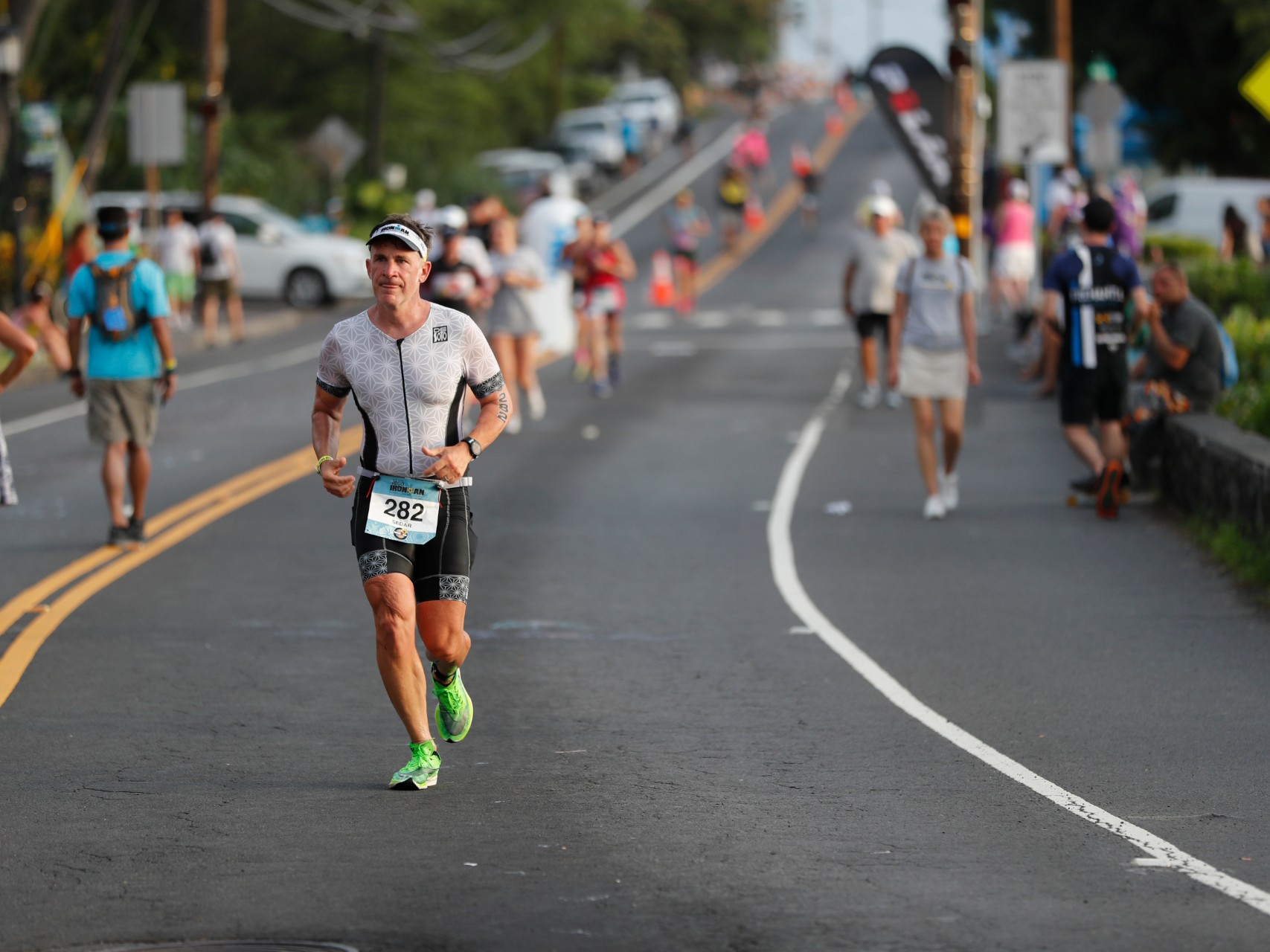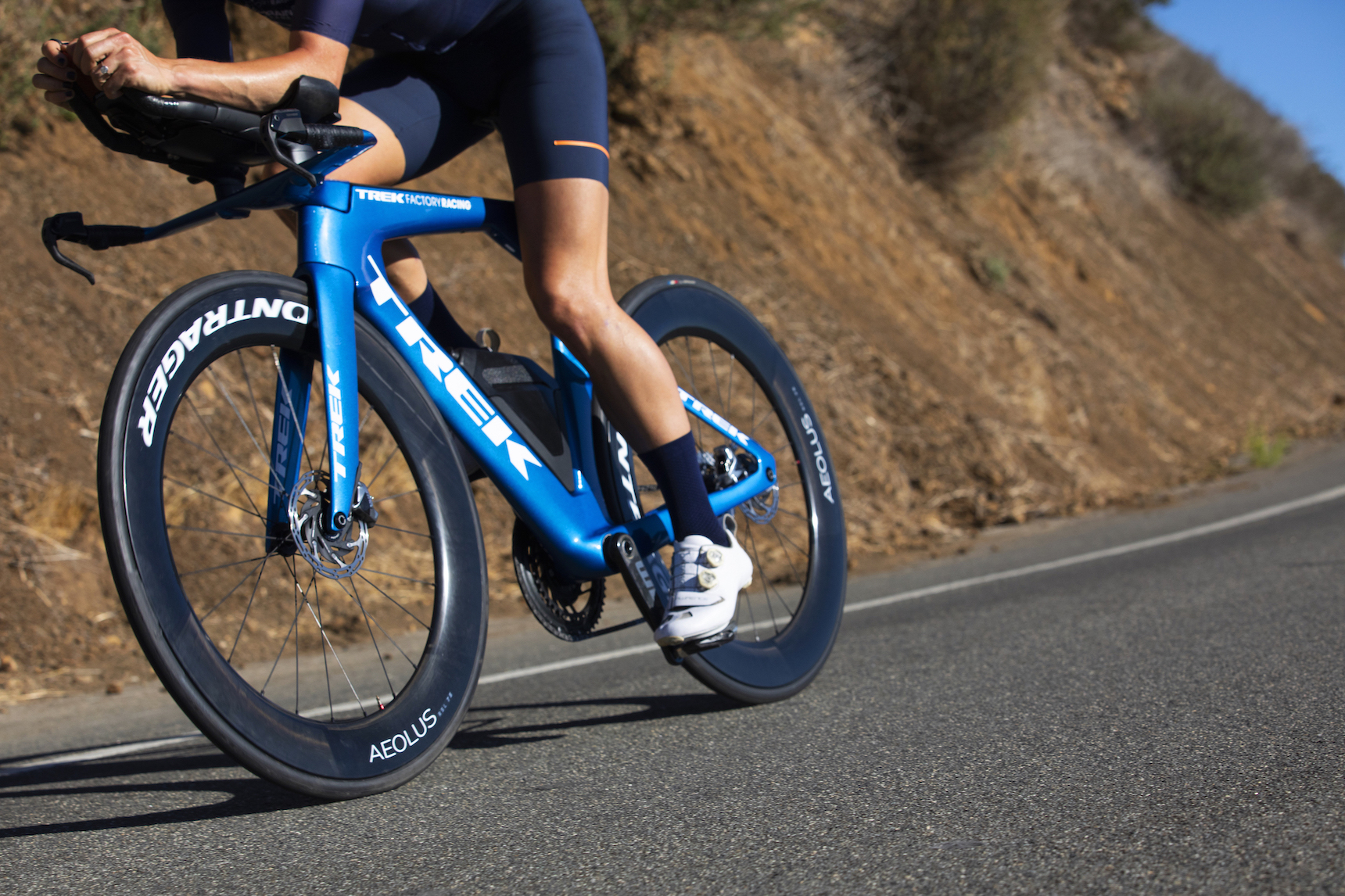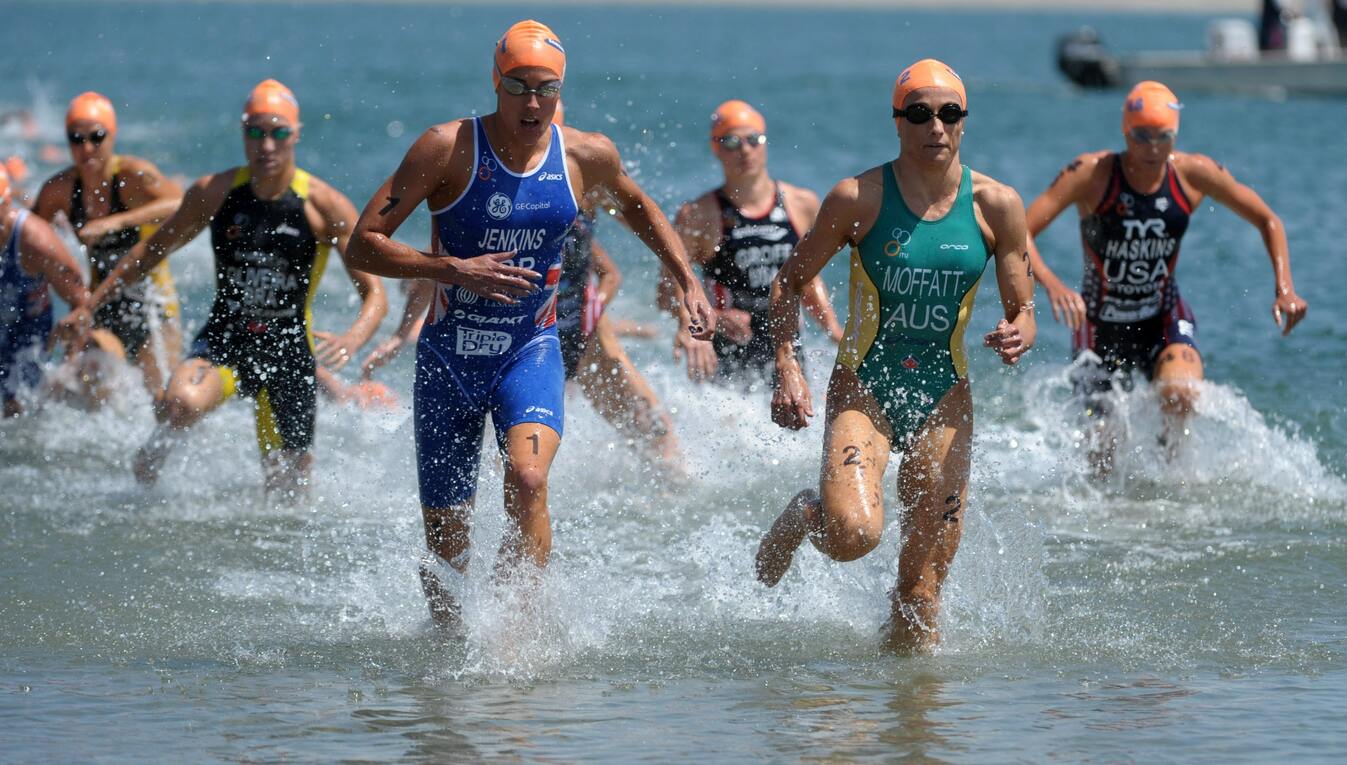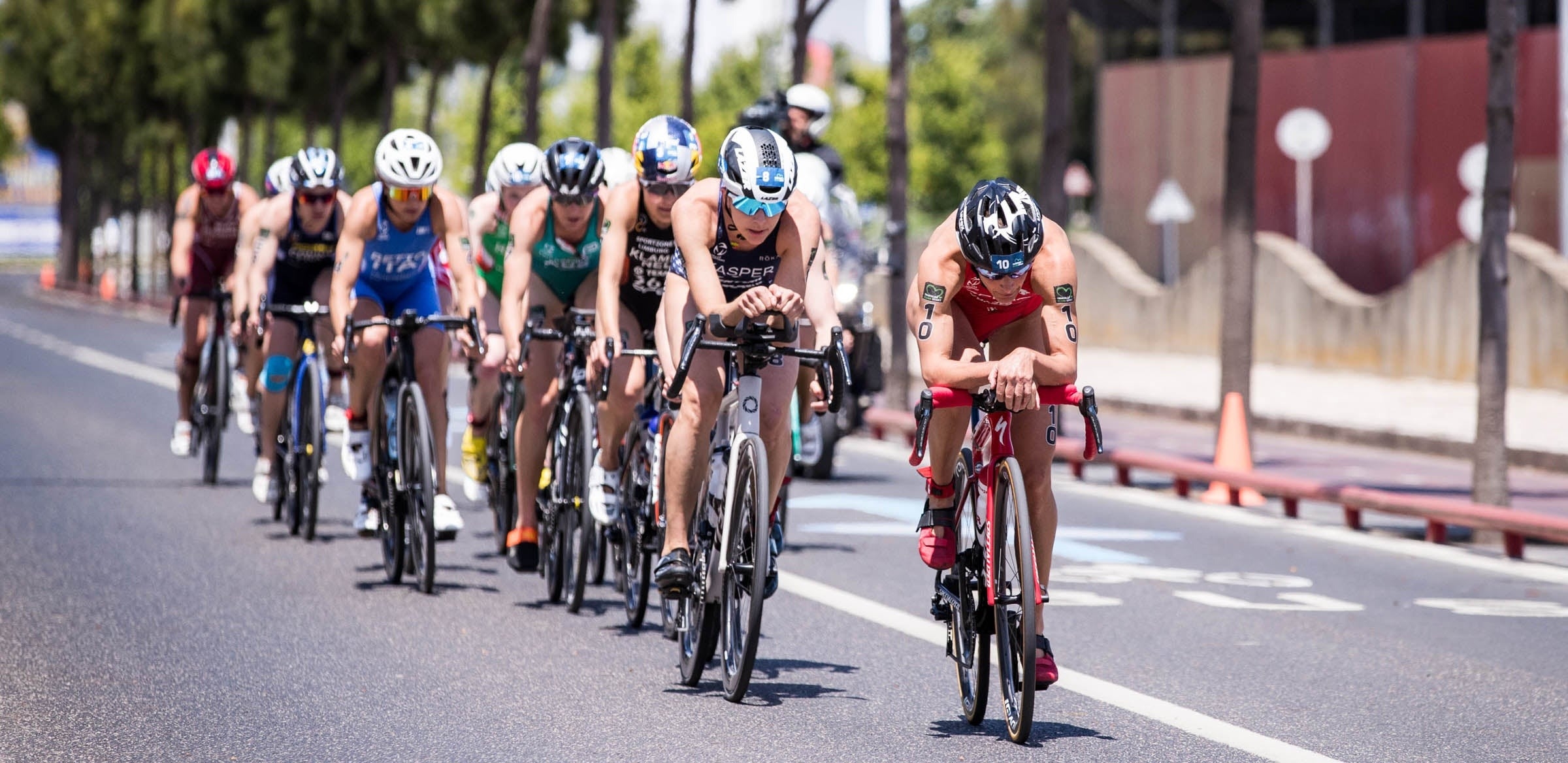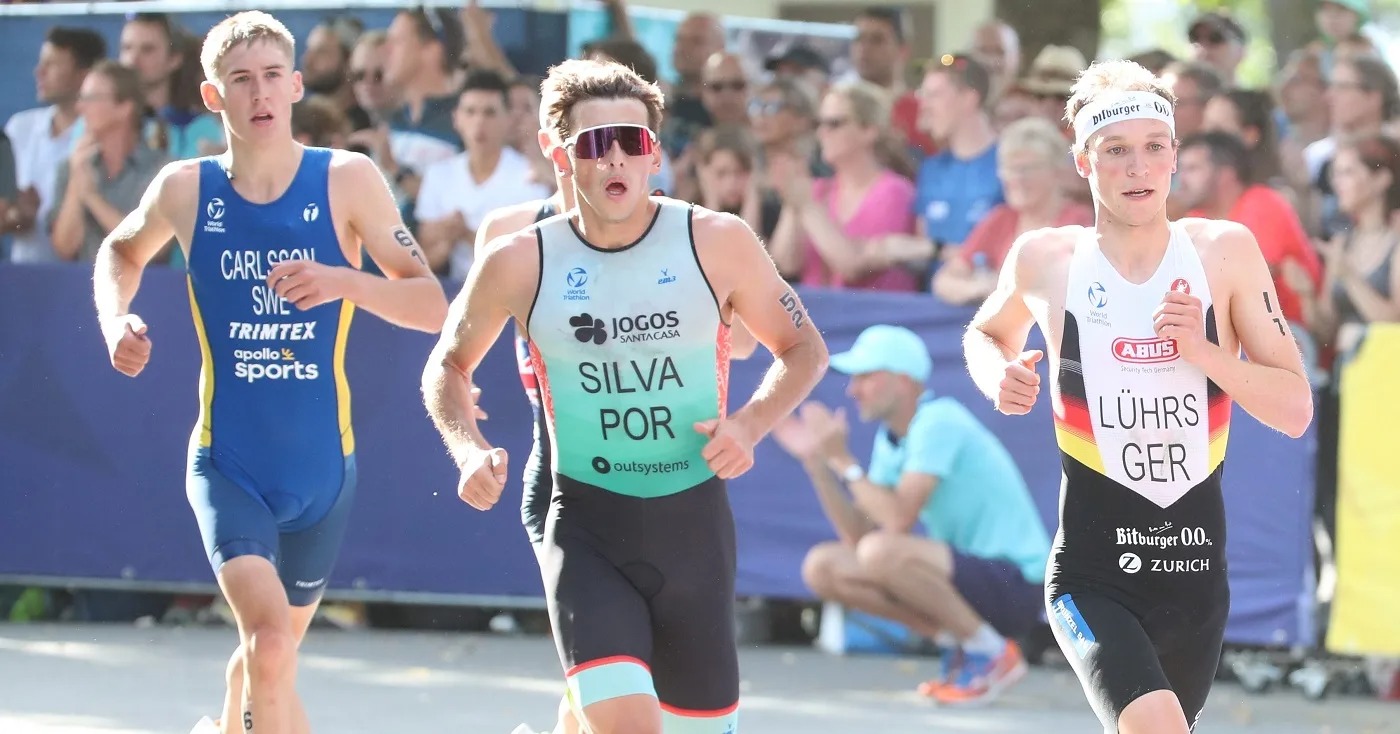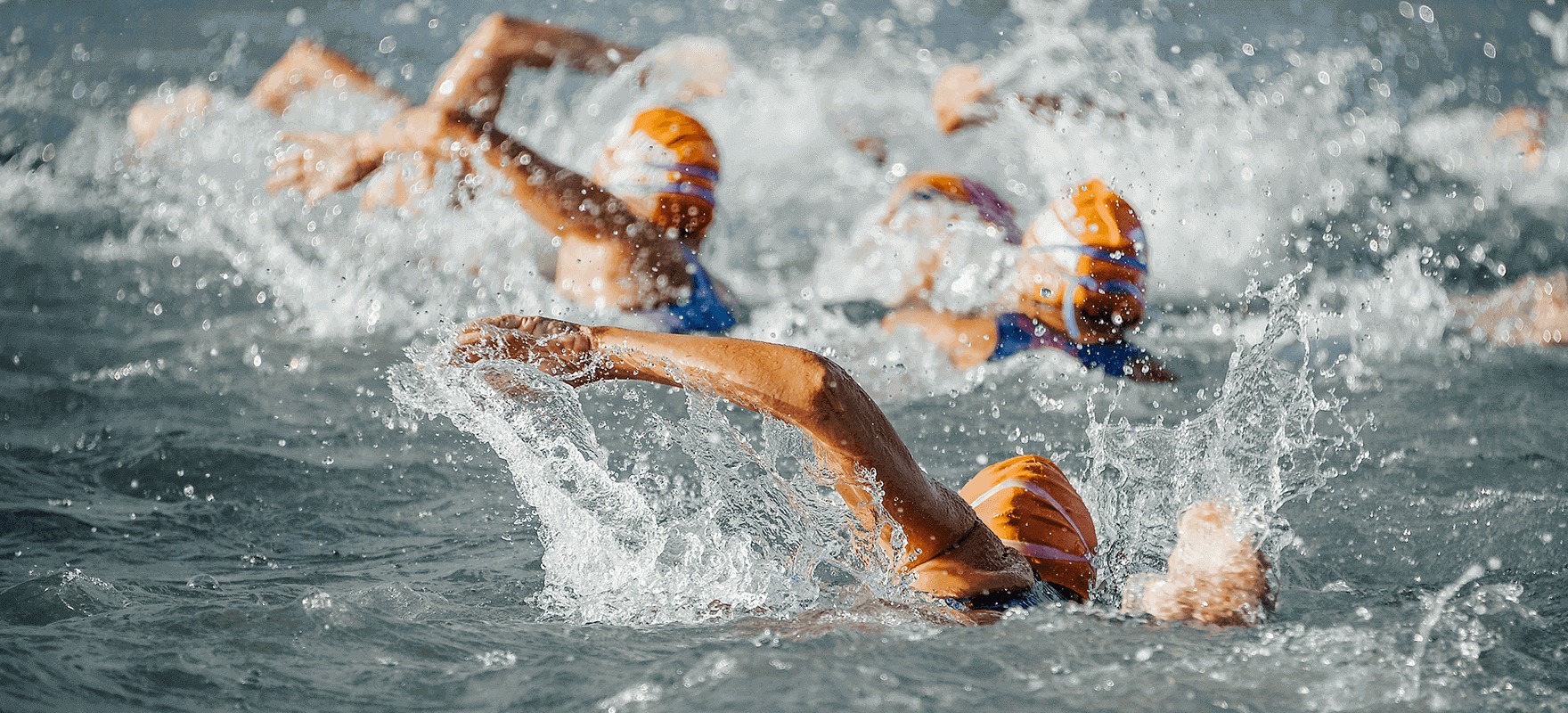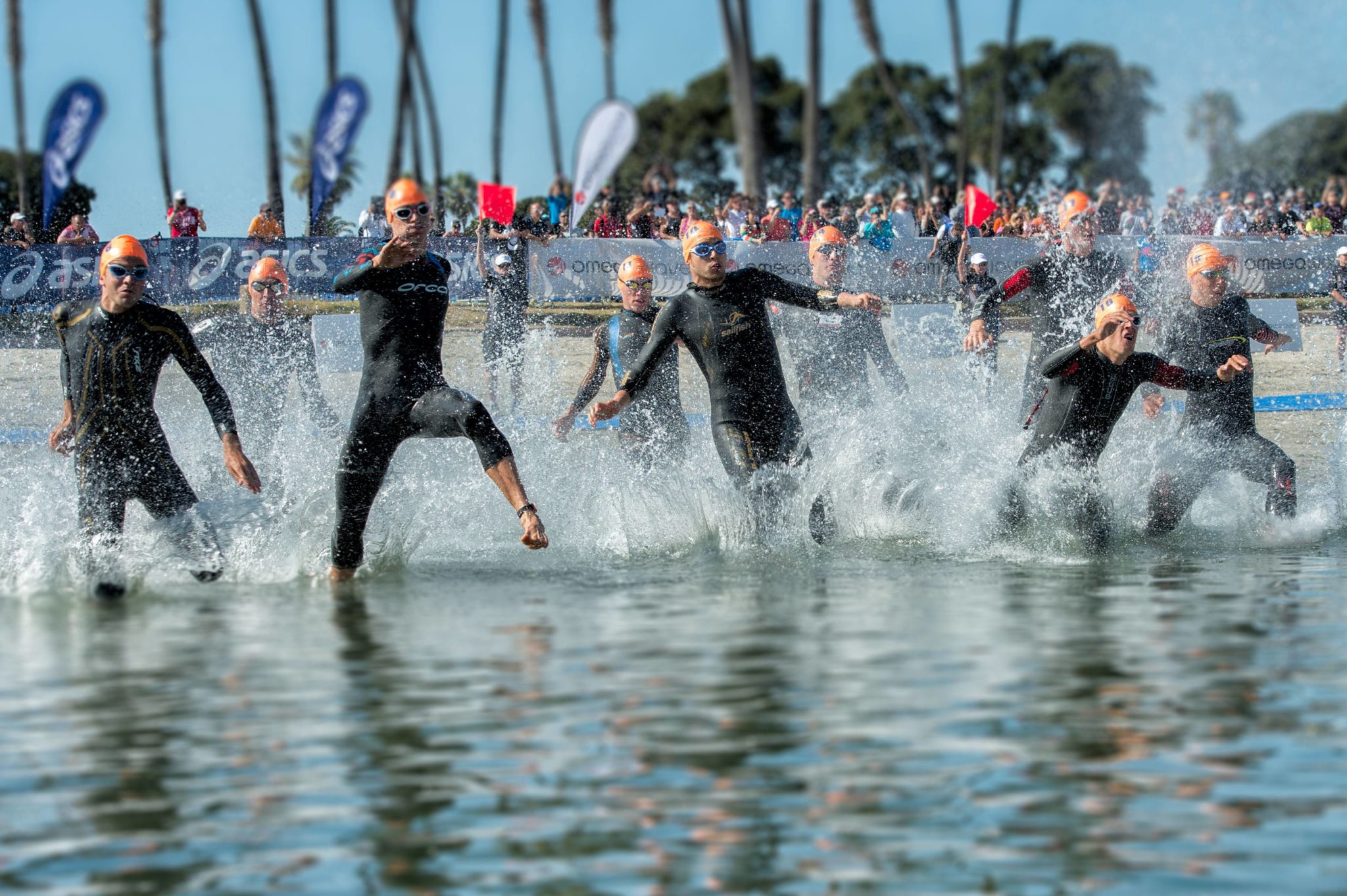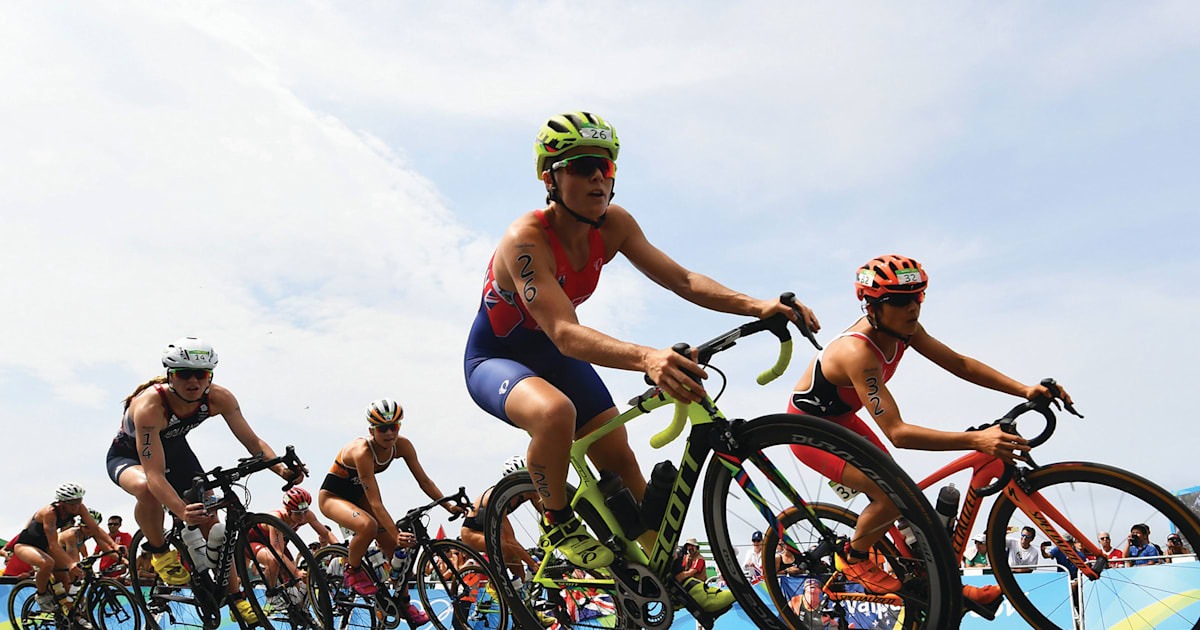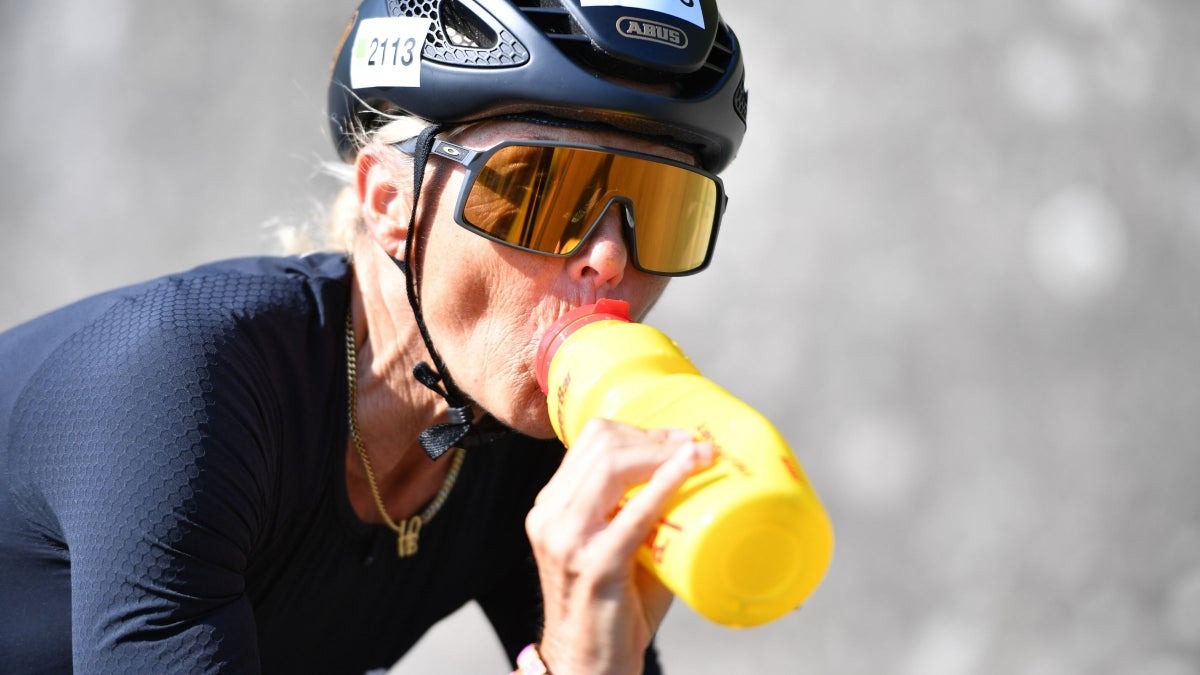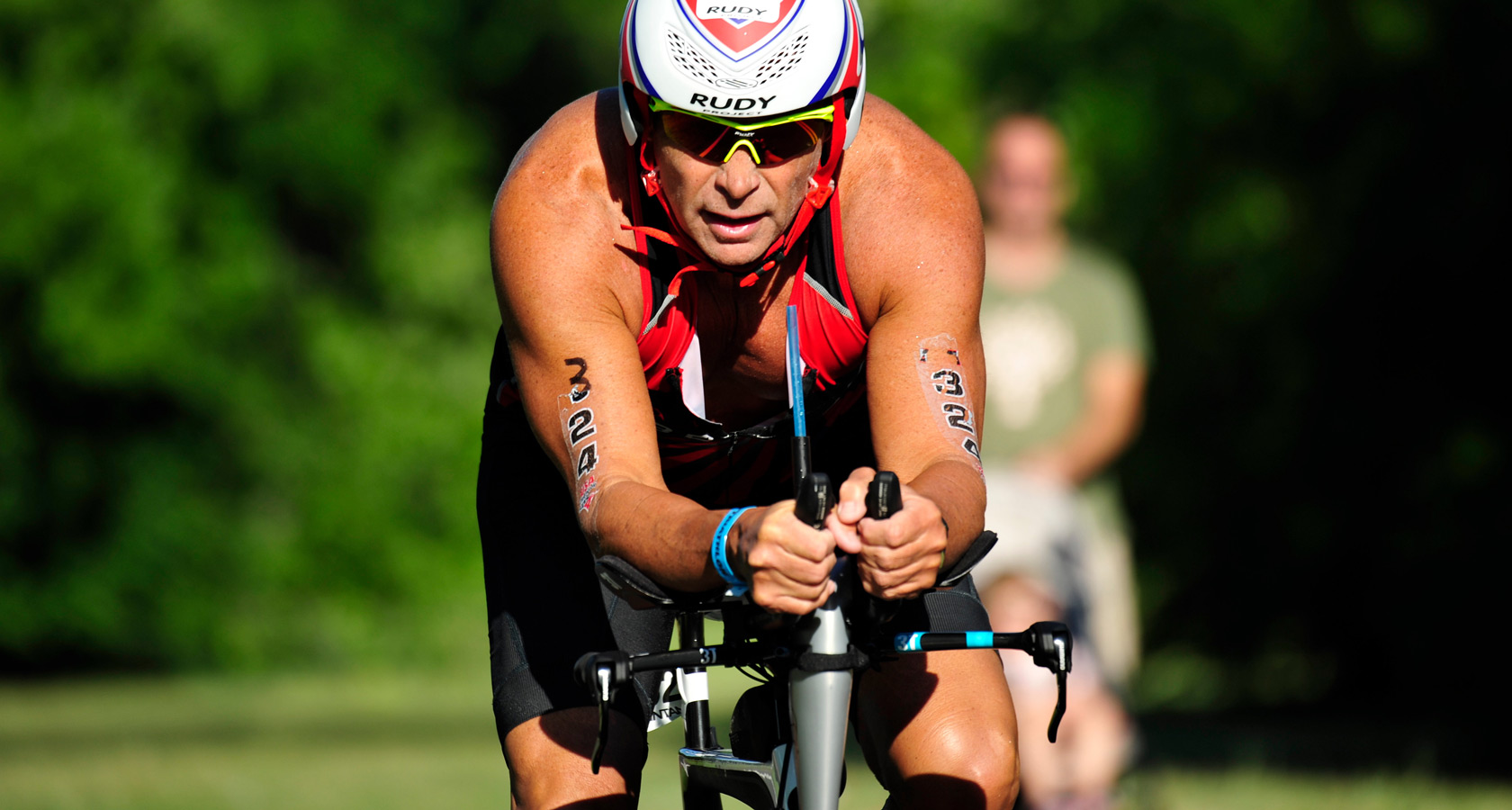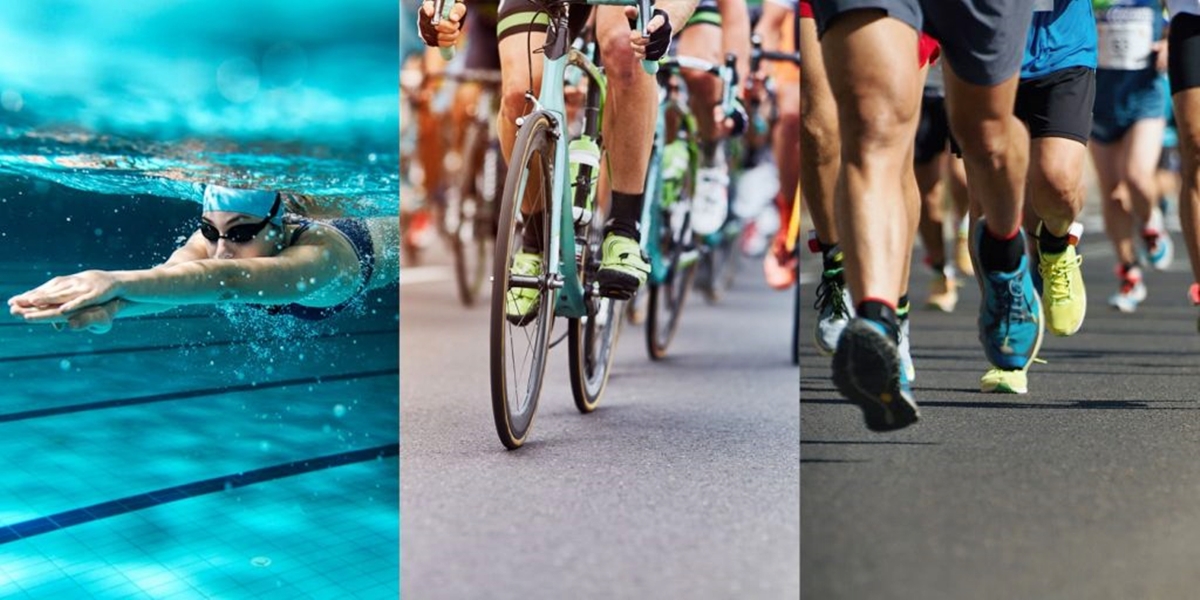

Featured
What Is Triathlon
Modified: January 22, 2024
Discover the world of triathlon with this comprehensive guide. Learn about the featured events, training tips, and gear recommendations to get started!
Introduction
Welcome to the exciting world of triathlon! Whether you’re a seasoned endurance athlete or someone looking to challenge themselves in a new way, triathlon offers a unique and thrilling experience that combines swimming, cycling, and running into one incredible event. In this article, we’ll explore the ins and outs of triathlon, from its definition and history to the various disciplines and equipment involved. We’ll also delve into the training techniques needed to prepare for a triathlon, the different types of races you can participate in, and the numerous benefits and challenges that come with this demanding sport.
Triathlon is not just a sport – it’s a lifestyle that pushes athletes to their physical and mental limits. It requires dedication, discipline, and a relentless drive to succeed. The combination of three distinct disciplines makes triathlon a unique and captivating challenge that attracts competitors from all walks of life.
With its roots dating back to the 1970s, triathlon has evolved into a global phenomenon that captivates both athletes and spectators alike. It has grown from humble beginnings to become an Olympic sport, showcasing the incredible athleticism and determination of its participants.
As we navigate through the world of triathlon, we will explore the different distances involved, ranging from sprint triathlons for beginners to Ironman-distance races for seasoned veterans. We’ll also examine the equipment necessary to compete in each discipline and discuss the training strategies used by triathletes to build stamina and improve performance.
Triathlon offers a wide range of racing options, from local events to world-famous competitions that draw elite athletes from around the globe. We’ll take a closer look at the various types of triathlon races, including Olympic-distance, long-distance, and off-road events, to help you find the perfect race to suit your goals and abilities.
Participating in triathlons comes with many benefits, both physical and mental. From improved cardiovascular fitness and muscular endurance to the satisfaction of achieving personal goals, triathlon offers a rewarding experience like no other. However, it’s important to acknowledge the challenges that come with this sport, such as time management, injury prevention, and the mental fortitude required to overcome obstacles.
So, whether you’re a beginner taking your first steps into the triathlon world or an experienced triathlete looking to expand your knowledge, join us as we dive into the depths of triathlon and uncover the excitement and challenges that lie ahead.
Definition of Triathlon
Triathlon is a multi-sport endurance event that involves three distinct disciplines: swimming, cycling, and running. Participants are required to complete all three disciplines in sequential order, with the clock continuing to run throughout the entire event, including transitions between each discipline.
The origins of triathlon can be traced back to the 1970s, when a group of athletes sought to settle a friendly debate on who was the fittest – swimmers, cyclists, or runners. They created the first triathlon event, known as the Mission Bay Triathlon, held in San Diego, California in 1974. Since then, triathlon has grown in popularity and has become one of the most challenging and prestigious endurance sports worldwide.
Triathlons are typically divided into various distance categories, catering to athletes of different skill levels and abilities. The most common types of triathlon distances include:
- Sprint Distance: This is the shortest triathlon distance, consisting of a 750-meter swim, a 20-kilometer bike ride, and a 5-kilometer run. It serves as an ideal starting point for beginners or those who prefer shorter, faster events.
- Olympic Distance: Also known as the standard distance, this triathlon consists of a 1.5-kilometer swim, a 40-kilometer bike ride, and a 10-kilometer run. It is the distance used in the Olympic Games and is a popular choice for intermediate triathletes.
- Half Ironman Distance: Also referred to as the 70.3 distance, this triathlon involves a 1.9-kilometer swim, a 90-kilometer bike ride, and a 21.1-kilometer run. It requires a higher level of fitness and endurance, making it a challenge for seasoned triathletes.
- Ironman Distance: Considered the ultimate test of endurance, the Ironman triathlon covers a grueling 3.86-kilometer swim, a 180.25-kilometer bike ride, and a full marathon-distance run of 42.2 kilometers. Completing an Ironman is a remarkable achievement and demands months of dedicated training.
One of the unique aspects of triathlon is the transition between each discipline, known as a transition zone. These areas are strategically placed along the racecourse and allow athletes to change their gear and prepare for the next segment. Efficient transitions can make a significant difference in a triathlete’s overall time, making them a crucial skill to master.
Triathlon is a demanding sport that requires a balanced approach to training. Athletes must develop their swimming technique to be efficient in the water, build their cycling endurance to tackle various terrains, and develop the stamina to run long distances after completing the first two disciplines. It is a true test of physical and mental strength, as athletes push themselves to their limits and strive for personal excellence.
In the next sections, we will dive deeper into each of the triathlon disciplines, examine the equipment used, explore training strategies, and discuss the various types of triathlon races and events available.
History of Triathlon
The history of triathlon can be traced back to the early 1970s when a group of athletes from different backgrounds came together to create a new and exciting endurance event. The mission was to settle a friendly dispute over who among them was the fittest – swimmers, cyclists, or runners.
The birthplace of triathlon is often credited to San Diego, California, where the first organized triathlon, known as the Mission Bay Triathlon, took place in 1974. This inaugural event consisted of a 5.5-mile run, a 5-mile bike ride, and a 600-yard swim, attracting a small group of 46 participants.
Following the success of the Mission Bay Triathlon, the sport continued to gain momentum and evolve. In 1978, the first Ironman Triathlon was held in Kailua-Kona, Hawaii. This legendary event, consisting of a 2.4-mile swim, a 112-mile bike ride, and a full marathon-distance run of 26.2 miles, pushed the boundaries of human endurance and became the pinnacle of triathlon achievement.
Triathlon made its Olympic debut in Sydney, Australia in 2000, firmly cementing its status as an elite international sport. The Olympic triathlon distances consist of a 1.5-kilometer swim, a 40-kilometer bike ride, and a 10-kilometer run. Since then, the sport has continued to captivate audiences worldwide with its exhilarating races and inspiring athletes.
Over the years, triathlon has grown exponentially and diversified into various forms and distances to accommodate athletes of different abilities. Today, there are numerous triathlon events held around the world, catering to beginners, amateurs, and elite professionals.
One of the most popular events in the triathlon calendar is the Ironman World Championship held annually in Kailua-Kona, Hawaii. This iconic race gathers the best triathletes from all corners of the globe to compete in the ultimate test of endurance. Known for its challenging course and intense conditions, the Ironman World Championship is a true spectacle that pushes athletes to their limits.
The sport of triathlon has also expanded beyond traditional road racing. Off-road triathlons, also known as XTERRA races, take place in rugged and natural environments, incorporating trail running, mountain biking, and open-water swimming.
With the growth of triathlon, the sport has become a platform for inspiration and personal transformation. Many athletes use triathlon as a means to overcome personal challenges, raise funds for charitable causes, and push themselves to reach new heights.
As triathlon continues to evolve and captivate athletes and spectators alike, it remains a testament to human perseverance and the pursuit of physical and mental excellence. In the following sections, we will delve into the different distances, disciplines, equipment, training techniques, and the wide array of races and events that make up the vibrant world of triathlon.
Triathlon Distances
Triathlon offers a range of distances to accommodate athletes of different abilities and aspirations. Whether you’re a beginner looking for a manageable challenge or an experienced triathlete aiming for an ultimate test of endurance, there is a triathlon distance suited for you. Here are the most common triathlon distances:
- Sprint Distance: The sprint distance is the shortest and most accessible option for those new to triathlon. It typically includes a 750-meter (0.47-mile) swim, a 20-kilometer (12.4-mile) bike ride, and a 5-kilometer (3.1-mile) run. Sprint triathlons are well-suited for beginners or individuals looking for a fast-paced, shorter race.
- Olympic Distance: Also known as the standard distance, the Olympic distance is the distance used in the Olympic Games. It consists of a 1.5-kilometer (0.93-mile) swim, a 40-kilometer (24.8-mile) bike ride, and a 10-kilometer (6.2-mile) run. Olympic-distance triathlons attract athletes who have some experience in each discipline and are seeking a moderate challenge.
- Half Ironman Distance (70.3): The half Ironman distance, also known as 70.3, is a step up from the Olympic distance and requires a higher level of endurance. It includes a 1.9-kilometer (1.2-mile) swim, a 90-kilometer (56-mile) bike ride, and a 21.1-kilometer (13.1-mile) run. These races provide a significant challenge and are often seen as a stepping stone towards full Ironman races.
- Ironman Distance: The Ironman distance is the ultimate test of endurance in the world of triathlon. It involves a 3.86-kilometer (2.4-mile) swim, a 180.25-kilometer (112-mile) bike ride, and a full marathon-distance run of 42.2 kilometers (26.2 miles). Completing an Ironman triathlon is a remarkable achievement and requires months of dedicated training and preparation.
Aside from these conventional distances, there are also variations and shorter versions of triathlons available. Super-sprint triathlons, for example, are an even shorter option with a 400-meter swim, a 10-kilometer bike ride, and a 2.5-kilometer run. These races are designed to be fast and intense, appealing to athletes who thrive on speed and quick transitions.
It’s important to note that the distances mentioned above are general guidelines, and there can be some variation between races. Triathlon events can differ in course layout, terrain, and specific distances. It’s essential to check the race details before registering to ensure you are aware of the exact distances you will be undertaking.
When choosing a triathlon distance to participate in, consider your fitness level, experience in each discipline, and the amount of time you are willing and able to dedicate to training. It’s always a good idea to start with a shorter distance if you are new to triathlon and gradually work your way up as you gain confidence and build endurance.
Remember, triathlon offers something for everyone, whether you’re looking for a personal challenge, a competitive experience, or simply a way to maintain an active and healthy lifestyle. The variety of distances available ensures that there is a triathlon suitable for every aspiring triathlete.
Triathlon Disciplines
Triathlon is a unique sport that combines three distinct disciplines: swimming, cycling, and running. Each discipline presents its own challenges and requires specific skills and training. Let’s take a closer look at the triathlon disciplines:
- Swimming: The swim leg is typically the first discipline in a triathlon. Participants must navigate through an open-water course or swim laps in a pool, depending on the race format. Swimming in open water can add an extra layer of complexity as athletes contend with currents, waves, and sighting to stay on course. Proper swim technique and efficiency are paramount to conserve energy for the remaining disciplines.
- Cycling: After completing the swim, athletes transition to the bike leg. Cycling in triathlons is usually done on road bikes or triathlon bikes, which are designed to optimize aerodynamics and speed. The bike leg can vary in distance and terrain, ranging from flat courses to hilly or even mountainous routes. Athletes must showcase their cycling skills and endurance while adhering to traffic rules and safety guidelines.
- Running: The final discipline of a triathlon is the run. This segment puts athletes’ endurance and mental fortitude to the test, as they transition from the swimming and cycling portions. The run leg is typically completed on roads, trails, or a combination of both. It requires pacing, proper form, and efficient energy management to maintain a steady stride and reach the finish line.
Transitioning between each discipline is an integral part of triathlon and can greatly impact overall performance. There are two transition areas in a triathlon: T1 (transition one) is the changeover from swim to bike, and T2 (transition two) is the shift from bike to run. Efficient transitions involve quickly changing gear, replenishing fluids, and mentally preparing for the next discipline.
While swimming, cycling, and running are the core disciplines of triathlon, there are also variations and adaptations of the sport. For example, some triathlons include an additional discipline, known as a duathlon, which replaces the swim with an initial run leg. Other variations include aquabike events, where participants complete the swim and bike disciplines without the run.
It’s important for triathletes to train and prepare for each discipline individually while also focusing on the transitions between them. Developing proficiency in swimming, cycling, and running techniques, as well as honing skills specific to triathlon, such as sighting in the open water or performing flying dismounts, can greatly enhance race performance.
Furthermore, triathletes must have the appropriate equipment for each discipline. This includes swimwear, goggles, and potentially a wetsuit for the swim; a bike, helmet, cycling shoes, and appropriate clothing for the bike; and running shoes, race apparel, and accessories for the run.
By mastering the intricacies of each discipline, triathletes can excel in their chosen events and achieve personal accomplishments. The combination of three distinct disciplines sets triathlon apart from other sports and adds to the challenge and excitement that attract athletes from around the world.
Triathlon Equipment
Triathlon requires specific equipment to ensure athletes can perform at their best and complete the event safely. From swimwear to bikes and running shoes, each piece of equipment plays a crucial role in a triathlete’s performance. Let’s explore the essential equipment needed for triathlon:
- Swim Gear: A comfortable and well-fitting swimsuit or triathlon-specific swimwear is essential for the swim leg. Goggles protect the eyes and provide clear vision in the water, while a swim cap helps with visibility and prevents hair from getting in the way. In wetsuit-legal races, a triathlon wetsuit can provide buoyancy, insulation, and added speed.
- Bike and Cycling Gear: The bike is a key component of a triathlete’s equipment. Road bikes and triathlon bikes are the most commonly used, designed for speed and efficiency. A properly fitted bike helmet is a mandatory safety requirement in all triathlon events. Other cycling gear includes cycling shoes, cycling shorts or triathlon shorts, a cycling jersey, and sunglasses to protect the eyes from the sun, wind, and debris.
- Running Gear: Good-quality running shoes that provide proper support and cushioning are essential for the run leg. Lightweight and breathable running apparel, such as shorts, tights, or a running singlet, will keep athletes comfortable during the run. Accessories like a running hat or visor and sports socks can also enhance performance and prevent discomfort.
- Transition Gear: Transition bags or backpacks are useful for organizing and carrying all necessary gear. Towels can be used in transition areas to dry off or stand on during gear changes. Race belts, which hold the race number, can be worn throughout the entire race, eliminating the need for pinning the number on clothing.
- Nutrition and Hydration: As triathlons are endurance events, proper nutrition and hydration are crucial. Athletes can use energy gels, sports drinks, electrolyte tablets, or other portable snacks to fuel their bodies during the race. A hydration system, such as a water bottle mounted on the bike or a hydration pack, can help triathletes stay hydrated throughout the event.
- Other Equipment: Miscellaneous items such as a timing chip or ankle strap, a bike pump, spare tubes, tire levers, and a multitool are essential for mechanical support. Training aids such as swim fins, pull buoys, hand paddles, and resistance bands can also be used during training sessions to improve technique and strength.
It’s important to note that investing in quality equipment that fits properly is beneficial for comfort, performance, and injury prevention. Triathletes should also take the time to familiarize themselves with their equipment, ensuring that it is well-maintained and in good working condition to avoid any technical issues on race day.
Additionally, practicing with the equipment during training sessions allows athletes to become comfortable and efficient in their transitions between disciplines. Quick and seamless transitions can make a significant difference in overall race time.
While having the right equipment is important, it’s equally critical to ensure proper training and technique in each discipline. Developing proficiency in swimming, cycling, and running and honing the skills specific to triathlon will help athletes maximize their potential and achieve their goals.
By having the necessary equipment and combining it with consistent training and dedication, triathletes can embark on their racing journey well-prepared and ready to conquer the challenges ahead.
Training for Triathlon
Training for a triathlon requires a well-rounded approach that focuses on building fitness, endurance, and skill in each of the three disciplines: swimming, cycling, and running. Here are some key considerations when it comes to training for a triathlon:
- Establish a Training Plan: Developing a structured training plan is essential to ensure gradual progression and avoid overexertion or injury. A balanced plan typically includes a mix of endurance workouts, interval training sessions, strength training, and rest days for recovery.
- Swimming: For the swim leg, it is important to focus on building swim technique, efficiency, and endurance. This can be achieved through regular pool sessions, drills to improve stroke mechanics, and open-water swimming practice to acclimate to different conditions.
- Cycling: Cycling training involves building both aerobic and muscular endurance. Long rides, hill workouts, and interval sessions can enhance cycling performance. Practicing bike-handling skills and maintaining a consistent cadence are also important aspects of cycling training.
- Running: Running workouts should include a mix of steady-state runs, tempo runs, and interval training to improve speed and endurance. Gradual increases in mileage, proper running form, and strength training exercises can contribute to better running performance and injury prevention.
- Brick Workouts: Since triathlon involves transitioning from one discipline to another, brick workouts are essential. These sessions involve completing a bike ride immediately followed by a run. Brick workouts help the body adapt to the unique demands of running off the bike.
- Mental Conditioning: Triathlon is not just a physical challenge, but also a mental one. Incorporating mental conditioning techniques like visualization, positive affirmations, goal-setting, and mental toughness drills can help athletes overcome fatigue and stay focused during training and races.
- Nutrition and Hydration: Proper nutrition and hydration are vital for optimal performance and recovery. Understanding individual nutritional needs, fueling strategies during training sessions and races, and practicing nutrition/hydration plans in training can enhance endurance and prevent fatigue or bonking.
- Rest and Recovery: Rest and recovery are as important as training itself. Incorporate planned rest days into the training schedule to allow the body to recover and adapt to the training stimulus. Adequate sleep, stretching, foam rolling, and regular massages can aid in recovery and reduce the risk of injuries.
- Progress Gradually: Gradual progression is key to prevent overtraining and reduce the risk of injuries. Increase training volume, intensity, or frequency slowly, allowing the body time to adapt and recover. Listen to your body, and adjust the training plan accordingly.
It is highly recommended to seek guidance from a qualified coach or join a triathlon training group to receive expert advice and support throughout the journey. A coach can assess your abilities, set realistic goals, develop personalized training plans, and provide feedback on technique, form, and race strategy.
Remember, consistency is key in triathlon training. Regular training sessions, coupled with proper technique, gradual progression, and adequate recovery, will greatly contribute to reaching peak performance on race day. Stay motivated, stay disciplined, and enjoy the journey as you progress towards achieving your triathlon goals.
Types of Triathlon Races
Triathlon encompasses a variety of race formats to cater to the diverse interests and abilities of athletes. Whether you prefer shorter, faster races or long-distance endurance challenges, there is a triathlon event for you. Let’s explore some of the different types of triathlon races:
- Sprint Triathlon: Sprint triathlons are shorter distance races, ideal for beginners or those looking for a quick and intense competition. They typically consist of a 750-meter (0.47-mile) swim, a 20-kilometer (12.4-mile) bike ride, and a 5-kilometer (3.1-mile) run. Sprint triathlons offer a thrilling and accessible entry point into the world of triathlon.
- Olympic Triathlon: Olympic triathlons, also known as standard-distance triathlons, mirror the distances used in the Olympic Games. They involve a 1.5-kilometer (0.93-mile) swim, a 40-kilometer (24.8-mile) bike ride, and a 10-kilometer (6.2-mile) run. Olympic triathlons attract a wide range of participants, from seasoned amateurs to elite athletes.
- Long-Distance Triathlon: Long-distance triathlons are known for their grueling challenges and test of endurance. The most famous long-distance triathlon is the Ironman, which consists of a 3.86-kilometer (2.4-mile) swim, a 180.25-kilometer (112-mile) bike ride, and a full marathon-distance run of 42.2 kilometers (26.2 miles). These races push athletes to their limits and require months of dedicated training.
- Off-Road Triathlon: Off-road triathlons, also referred to as XTERRA races, take place on a variety of natural terrains such as trails, mountains, or rugged landscapes. In addition to the traditional swim, bike, and run disciplines, off-road triathlons often incorporate obstacles, technical trails, and challenging terrain, adding an extra level of excitement and adventure to the competition.
- Relay Triathlon: Relay triathlons allow teams to compete together, with each team member completing one or more disciplines. This format is popular among friends, family members, and colleagues who want to experience the thrill of triathlon together. It is an excellent option for individuals who may have strengths in one discipline and wish to participate as part of a team.
- Duathlon: Duathlons consist of two disciplines: running and cycling. They are an excellent choice for athletes who may not be comfortable or proficient in swimming. Duathlons usually involve a run, followed by a bike leg, and ending with another run. Distances can vary, offering options for sprint-distance duathlons as well as longer, more challenging events.
- Aquabike: Aquabike events cater to individuals who enjoy swimming and cycling but prefer not to complete the run leg of a triathlon. Participants complete the swim and bike disciplines, experiencing the thrill and challenge of the first two segments without the demand of a run.
Each type of triathlon race offers its own unique experience and demands specific training and preparation. It’s important to choose races that align with your abilities, goals, and personal preferences. Participating in triathlon races provides opportunities for personal growth, competition, and connection with a vibrant community of like-minded individuals.
Whether you’re a beginner seeking a sprint triathlon to start your journey or an experienced triathlete looking to conquer an Ironman, triathlon races offer exhilarating challenges that push boundaries, foster self-discovery, and provide memorable experiences.
Triathlon Competitions and Events
Triathlon competitions and events offer athletes the opportunity to showcase their skills, challenge themselves, and be part of a vibrant and supportive community. From local races to world-renowned events, the world of triathlon offers something for everyone. Let’s explore some of the key competitions and events in the triathlon calendar:
- Local and Regional Races: Local and regional triathlons are a great starting point for beginners or those looking for a friendly and supportive environment. These races are usually shorter in distance and attract a diverse range of participants, from first-time triathletes to experienced amateurs. They provide an opportunity to gain race experience, set personal goals, and connect with the local triathlon community.
- National Championships: Many countries host national championships, where top triathletes compete for the prestigious title and an opportunity to represent their nation at international events. National championships often feature elite and age-group categories, allowing athletes to compete against others in their respective age groups and showcase their skills at a national level.
- World Triathlon Series: The World Triathlon Series (WTS) is a premier event series organized by the International Triathlon Union. It brings together elite triathletes from around the globe to compete in a series of races held in various locations worldwide. The WTS showcases the highest level of triathlon competition and offers a platform for athletes to earn valuable points towards world rankings and qualification for major international events.
- Ironman World Championship: The Ironman World Championship held in Kailua-Kona, Hawaii, is the pinnacle of long-distance triathlon. Qualifying through other Ironman races or by gaining a lottery entry, athletes from all over the world gather to compete in this iconic event. The Ironman World Championship features a challenging course, extreme conditions, and a rich history, making it one of the most coveted titles in the triathlon community.
- Age-Group World Championships: Age-group triathletes have the opportunity to compete in world championships within their respective age categories. These championships bring together passionate and dedicated amateur athletes who excel in their age groups. Athletes must qualify through designated qualifying races or ranking systems to earn a spot in the age-group world championships, offering them a chance to represent their country and compete against the best in their age group.
- Charity and Fundraising Races: Many triathlon events are organized to raise funds for charitable causes. These races allow participants to combine their love for triathlon with the opportunity to make a positive impact. Athletes can fundraise for a charity of their choice or participate in events that specifically support a cause, creating a sense of purpose and making a difference through their triathlon journey.
- Triathlon Festivals and Expos: Triathlon festivals and expos are multi-day events that celebrate the sport of triathlon. They include a range of activities such as races, clinics, workshops, vendor booths, product demonstrations, and social gatherings. These events provide a platform for athletes, coaches, sponsors, and enthusiasts to come together, share knowledge, explore new products and technologies, and immerse themselves in the triathlon culture.
Participating in triathlon competitions and events not only allows athletes to showcase their physical abilities but also provides a sense of camaraderie and belonging within the triathlon community. From the excitement of crossing the finish line to the support of fellow competitors, triathlons foster an inclusive and encouraging atmosphere where athletes can push their limits, achieve personal goals, and celebrate their accomplishments.
Whether you’re aiming to stand on the podium at a national championship or simply looking to enjoy the atmosphere and challenge yourself in a local race, triathlon competitions and events offer an array of opportunities for athletes of all levels. The experience of being part of a triathlon event is a thrilling and rewarding journey that leaves a lasting impression on both body and soul.
Benefits of Triathlon
Triathlon offers a multitude of benefits that go beyond the physical aspects of fitness. Engaging in triathlon training and participating in triathlon events can positively impact various aspects of an athlete’s life. Let’s explore some of the key benefits of triathlon:
- Physical Fitness: Triathlon is a demanding sport that requires athletes to develop fitness in swimming, cycling, and running. By participating in regular triathlon training, athletes improve cardiovascular endurance, muscular strength, flexibility, and overall physical fitness. The combination of these three disciplines provides a well-rounded full-body workout.
- Mental Strength: Triathlon is a mental battle as much as a physical one. Endurance training and racing help build mental fortitude, resilience, and discipline. Athletes learn to push through challenges, manage discomfort, and overcome obstacles, both on and off the racecourse. The ability to stay focused and maintain a positive mindset during long-distance events translates to other areas of life as well.
- Goal Setting and Achievement: Triathlon offers a range of race distances, allowing athletes to set and achieve both short-term and long-term goals. From completing a sprint triathlon to conquering an Ironman, each race presents a unique challenge to strive for. Setting realistic goals, training diligently, and crossing the finish line instills a sense of accomplishment and boosts self-confidence.
- Community and Camaraderie: The triathlon community is known for its inclusivity, support, and camaraderie. Shared experiences, training sessions, and race days foster connections among athletes, leading to new friendships, mentorships, and a sense of belonging. The support and encouragement from fellow triathletes create a motivating environment that enhances the overall triathlon experience.
- Overall Wellness: Engaging in triathlon promotes overall well-being. Regular physical activity is linked to improved mental health, stress reduction, better sleep patterns, and increased energy levels. Triathlon training encourages a balanced lifestyle, motivating athletes to make healthier choices in nutrition, hydration, and stress management.
- Time Management and Discipline: Balancing training with work, family, and other commitments requires effective time management skills. Triathlon training instills discipline, helps athletes prioritize their time, and develop efficient routines. These skills are transferable to other areas of life, promoting productivity and success in various endeavors.
- Personal Growth and Self-Discovery: Triathlon challenges athletes to step out of their comfort zones and discover what they are truly capable of achieving. The training and racing journey presents countless opportunities for personal growth, self-reflection, and self-improvement. Athletes gain a deeper understanding of their physical and mental limits, fostering personal development and a growth mindset.
- Positive Role Modeling: Engaging in triathlon can serve as a positive example for others, inspiring friends, family, and the community to adopt an active and healthy lifestyle. Through perseverance, dedication, and living a balanced life, triathletes become role models and motivate others to pursue their own fitness and wellness goals.
Triathlon is not just a sport; it is a transformative journey that brings about physical and mental growth, builds resilience, and fosters a supportive community. The benefits of triathlon extend far beyond the racecourse, positively impacting all aspects of an athlete’s life and promoting overall well-being.
Challenges of Triathlon
While participating in triathlon brings numerous rewards, it is not without its challenges. Triathletes face various obstacles throughout their journey, both physical and mental. Understanding and overcoming these challenges is an integral part of the triathlon experience. Here are some of the key challenges faced by triathletes:
- Physical Demands: Triathlon requires athletes to excel in three disciplines, each with its own physical demands. The training volume and intensity needed to build endurance in swimming, cycling, and running can be physically demanding and challenging. Athletes must navigate through fatigue, muscle soreness, and the risk of overuse injuries as they strive to improve performance.
- Time Commitment: Triathlon training requires a significant time commitment. Balancing training sessions with work, family, and other responsibilities can be challenging. Triathletes must be dedicated and disciplined, often waking up early or fitting in workouts during busy schedules. Effective time management skills are crucial to maintain consistency in training.
- Mental Resilience: Triathlon tests athletes’ mental resilience and emotional fortitude. Enduring long training sessions, pushing through physical discomfort, and managing race-day nerves can be mentally exhausting. Triathletes must develop strategies to stay motivated, maintain focus, and overcome self-doubt. Mental resilience is essential to face the mental and physical challenges encountered during training and races.
- Transition Mastery: Transitions, the periods between each discipline, present a unique challenge in triathlon. Efficiently transitioning from the swim to the bike and from the bike to the run requires practice and skill. Triathletes must master the art of quickly changing gear, maintaining mental focus, and smoothly transitioning between disciplines without wasting valuable time.
- Nutrition and Hydration: Proper nutrition and hydration play a vital role in triathlon performance. Finding the right balance of fueling the body with the necessary nutrients and maintaining hydration levels during training and racing can be challenging. Triathletes must develop nutrition and hydration strategies that work for them individually, taking into account their needs, preferences, and the demands of each discipline.
- Injury Prevention: Triathlon training can put a strain on the body, increasing the risk of overuse injuries. The repetitive nature of swimming, cycling, and running can lead to issues such as muscle strains, tendinitis, and stress fractures. Triathletes must prioritize injury prevention by incorporating proper warm-up and cool-down routines, cross-training, strength training, and listening to their bodies to avoid overtraining and injury.
- Financial Investment: Triathlon can be a costly sport. The expenses associated with high-quality equipment, race entries, travel, coaching, and training gear can add up. Triathletes must budget and invest wisely to ensure they have the necessary equipment and resources without overextending themselves financially.
- Weather and Race Conditions: Triathlon events take place in various weather and race conditions, which can add an additional layer of challenge. Extreme temperatures, strong winds, rain, and other unpredictable factors can impact performance and mental focus. Triathletes must adapt to varying environments and prepare themselves mentally and physically for adverse conditions.
Despite these challenges, overcoming them is part of the journey and brings a sense of accomplishment. Triathletes learn valuable lessons of perseverance, determination, and adaptability that extend far beyond the racecourse.
By acknowledging and preparing for these challenges, triathletes can develop strategies, seek support from coaches and fellow athletes, and harness their mental and physical strength to overcome obstacles and achieve their goals.
Conclusion
Triathlon is a challenging and rewarding sport that combines swimming, cycling, and running into a demanding multi-discipline endurance event. It appeals to athletes of all levels, from beginners seeking a new fitness challenge to seasoned veterans striving for personal bests and podium finishes. Throughout the journey of participating in triathlon, athletes experience numerous benefits that extend beyond the racecourse.
Engaging in triathlon training and participating in triathlon events offer a range of physical and mental benefits. Athletes improve their overall fitness, develop mental strength and resilience, set and achieve goals, and embrace a balanced lifestyle. Triathlon fosters a supportive community, providing opportunities for connection, camaraderie, and personal growth. It instills discipline, time management skills, and the ability to overcome challenges – skills that can be applied to all aspects of life.
However, it’s important to recognize that triathlon also presents various challenges. Triathletes face physical demands, juggle time commitments, build mental resilience, strive to master transitions, focus on proper nutrition and hydration, prevent injuries, manage financial investments, and adapt to varying race conditions. Overcoming these challenges is an essential part of the triathlon journey and contributes to personal growth and a sense of fulfillment.
Triathlon offers a wide range of racing options, from local and regional races to national and international championships. Athletes can choose from sprint, Olympic, long-distance, off-road, relay, duathlon, and aquabike events, all of which provide unique experiences and challenges. Triathlon festivals and expos further enhance the sense of community and celebration surrounding the sport.
In essence, triathlon is more than just a sport – it is a transformative lifestyle that promotes physical health, mental strength, personal growth, and connection. The journey of triathlon is one that pushes boundaries, fosters resilience, and provides a platform for achieving personal goals and creating lasting memories.
So, whether you’re considering entering your first triathlon or you’re a seasoned triathlete looking for new challenges, embrace the spirit of triathlon and embark on a journey that will test your limits, shape your character, and elevate you to new heights.
